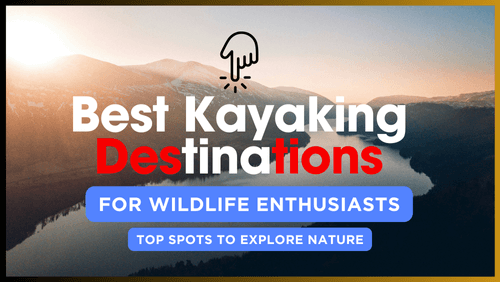Imagine gliding through a sprawling network of waterways, each paddle stroke bringing you closer to an encounter with some of America’s most iconic wildlife. Welcome to Everglades National Park, one of the best kayaking destinations for wildlife enthusiasts.
This mesmerizing maze of subtropical wetlands has rightly earned its place as a UNESCO World Heritage Site. This distinctive ecosystem is a tapestry woven with liquid channels, sawgrass marshes, and mangrove forests, each a habitat for a plethora of creatures.
Wildlife Encounters in Everglades National Park
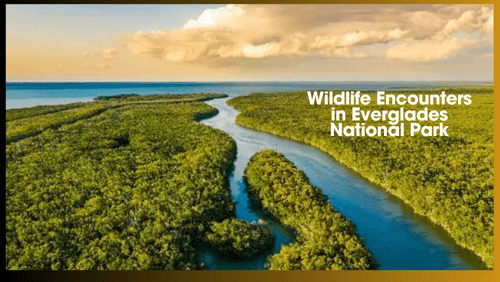
Here, American alligators reign supreme, basking on banks or lurking beneath the glassy surface. It’s not just about these prehistoric predators though; the park is a haven for manatees that glide through the calm waters and an array of bird species that paint the skies.
Every turn through the Everglades is a live exhibition of biodiversity – from wading birds taking flight at the crack of dawn to the rich chorus of amphibians as the sun dips below the horizon.
Exploring the Trails: Nine Mile Pond and Hell’s Bay Canoe Trail
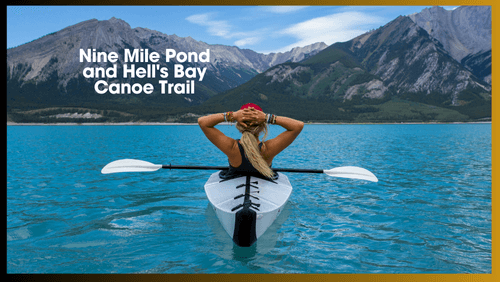
Venturing into the heart of the park, the Nine Mile Pond Canoe Trail beckons with its serene beauty, while the aptly named Hell’s Bay Canoe Trail offers a challenge for the more adventurous paddlers.
Each trail provides a unique perspective of the park’s wonders, winding past mangrove tunnels and open bays where wildlife viewing is as easy as a gaze in any direction.
Best Time to Visit and Safety Tips
If you’re planning a visit, you’re going to want to know about timing and safety. The best seasons for wildlife viewing in the Everglades are the drier, cooler months from December to April.
Not only is the weather more comfortable for paddling, but reduced water levels make wildlife easier to spot. Keep in mind, staying safe is paramount; always observe park regulations and be conscious of the potential presence of alligators and other wildlife. Remember, this is their home, and you’re the visitor.
Transitioning to Johnstone Strait, British Columbia
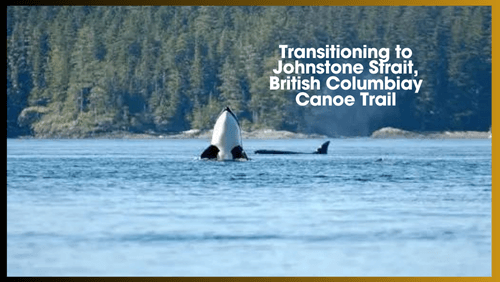
So, with the image of paddling through the Everglades still fresh, let’s set our sights further afield. Next, we’ll explore the cool waters of Johnstone Strait in British Columbia, Canada, where the wildlife takes to a different stage – the vast ocean.
From the quiet solitude of the Everglades’ marshy realms, we’ll transition to the dynamic coastline where orcas rule and the opportunities for kayaking adventures are as breathtaking as the scenery.
Johnstone Strait, British Columbia: Orca Territory and Beyond
So you’re curious about where else you can paddle your kayak to witness wildlife in their natural habitat? Let’s venture to the serene waters of British Columbia, where the Johnstone Strait holds a marine spectacle unlike any other.
What makes Johnstone Strait especially significant? It’s a renowned haven for one of the most awe-inspiring ocean giants – the orca, or killer whale.
Marine Life Diversity in Johnstone Strait
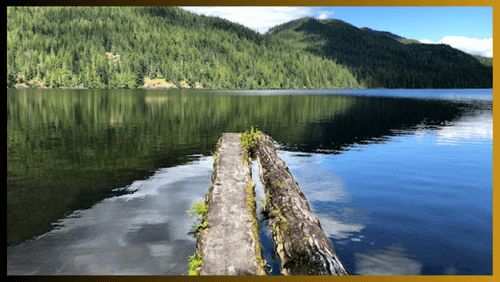
The strait isn’t only about these iconic cetaceans. You’re going to find out about the other marine life that calls these waters home.
Humpback whales, chatty sea lions, and curious dolphins also frequent the area, and the sky above is patrolled by majestic bald eagles and an array of seabirds.
Just imagine the thrill of kayaking as a dorsal fin breaks the surface or an eagle soars overhead – it’s nature’s theater at its best.
Kayaking Routes for Optimal Wildlife Viewing
Now what is the best strategy to witness these creatures up close? There are several kayaking routes to choose from. For starters, the trip from Telegraph Cove to Robson Bight offers an unparalleled opportunity to enter orca territory.
If you’re seeking a longer adventure, circumnavigate Hanson Island and immerse yourself in the full splendor of the region’s diverse ecosystem. Each stroke of your paddle might unveil another chapter of this marine story.
Best Time to Visit and Important Tips
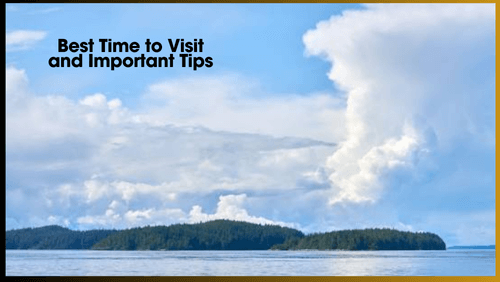
Before you get out there, here are a few tips. The prime time for whale watching falls between July and September when the orcas are most active. Always maintain a respectful distance from wildlife – not only is it the law, but it’s also our duty to protect these magnificent creatures.
And do remember, while spontaneity is a thrill, planning here is everything. Familiarize yourself with guidelines for respectful wildlife interaction – and you’re set for a transformative experience.
Galapagos Islands, Ecuador: Paddling in Darwin’s Footsteps

Now what is a Galapagos Islands adventure? It’s a rare chance to follow in the wake of Charles Darwin. This archipelago is a living museum of evolutionary changes, a place where you can paddle alongside a kaleidoscope of creatures that have evolved separately from their mainland relatives. That’s what makes the Galapagos a must-visit destination for wildlife kayak enthusiasts.
Wildlife Encounters in the Galapagos Islands

A paradise for paddlers and nature lovers alike, the waters here are teeming with life. You’re going to find out about marine iguanas sunbathing on volcanic rocks, curious sea lions who might just tag along as you kayak, and the iconic Galapagos penguins darting through the waves. Plus, you might get to meet the ancient, gentle giants – the Galapagos tortoises.
Kayaking Routes: Santa Cruz Island and Isabela Island

Moving onto kayaking routes, you’ve got a couple of stellar options. You can navigate the itineraries around Santa Cruz Island, where the blue waters will guide you through a landscape of otherworldly beauty.
Or, if you’re feeling a bit more adventurous, head to Isabela Island. Here, the awe-inspiring vistas are matched only by the chances of spying rays and sharks beneath your kayak.
Best Time to Visit and Planning Tips
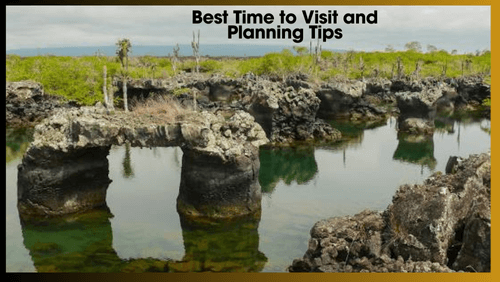
Planning your trip involves a bit more than just choosing a route, though. You need to look at the best times to visit for an optimal wildlife experience. Equally important is to understand and abide by the rules that safeguard this unique environment.
In many cases, guided tours are the way to go, as they’re led by those who cherish and respect the local wildlife and ecosystems.
Conclusion: Preserving the Splendor as We Paddle Through
Yielding insights into untamed territories and cross-species camaraderie, kayaking invites you to a symphony of natural wonders. It’s not every day you get to paddle a few feet away from an inquisitive sea otter or float beneath a soaring eagle.
The Deeper Purpose of Kayaking
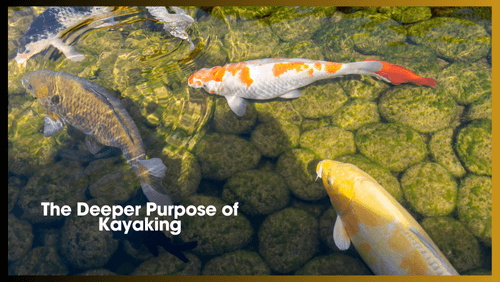
This isn’t just about thrill-seeking; this is about fostering a connection with our planet’s incredible ecosystems. The destinations highlighted are a mere starting point to the vast opportunities awaiting in the wild waters.
A Journey Beyond the Ordinary
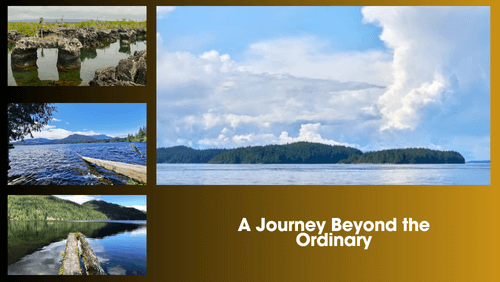
Your kayaking venture through the Everglades, Galapagos Islands, or any of the awe-inspiring locales mentioned offers more than just an escape from the mundane. It serves as an eye-opener to the fragility and beauty of the wildlife we share our world with.
Responsible Paddling and Conservation
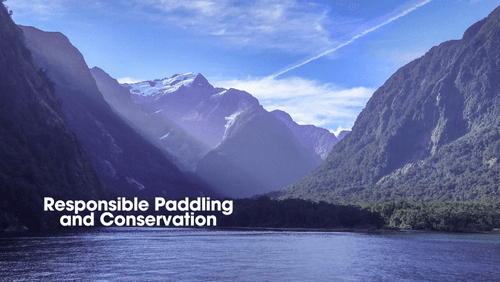
Remember, while these waterways beckon with the promise of adventure, they also demand our utmost respect and care. Responsible paddling means observing regulations, minimizing impact, and perhaps most importantly, cherishing each encounter without disturbing the natural harmony.
Embracing the Challenge
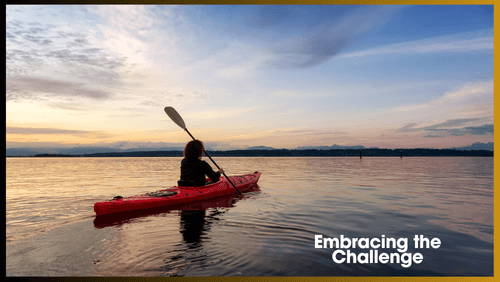
Choose something that resonates with you, whether it’s the pursuit of serene paddles in protected bays or the adrenaline rush of navigating challenging routes.
But always remember: with each stroke of the paddle, you’re not merely a visitor, you’re a guardian of these treasured ecosystems.
Inspiring Responsible Exploration
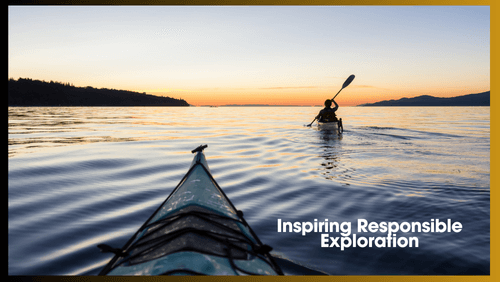
I really hope that you’ll embrace the challenge, respect the habitats, and share your experiences, so others may be inspired to explore responsibly.
The best kayaking destinations for wildlife enthusiasts aren’t just a testament to nature’s bounty; they’re an invitation to preserve it for future generations. Happy paddling!
